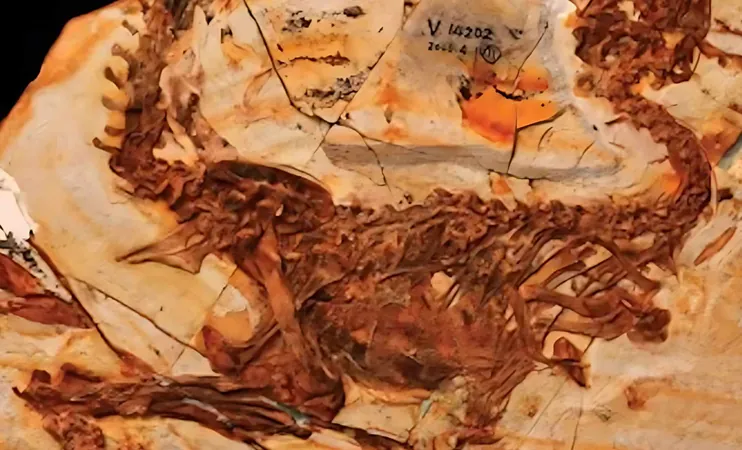
Unlocking the Secrets of a 125-Million-Year-Old Predator: Mammals Found Inside!
2025-04-17
Author: Ting
Ancient Predator Uncovered in China
In a stunning revelation from northeastern China, paleontologists have identified two new species of feathered theropod dinosaurs that roamed the Earth 125 million years ago. Among the fossil treasures is a jaw-dropping discovery—actual evidence of a dinosaur predating on mammals! This groundbreaking find offers fresh insights into the behavior and ecological roles of small carnivorous dinosaurs during the early Cretaceous period.
Extraordinary Fossils from the Jehol Biota
The fossils hail from the extraordinary Jehol Biota, a treasure trove of well-preserved specimens located in Lingyuan. This rich ecosystem has once again delivered remarkable fossils: Sinosauropteryx lingyuanensis and Huadanosaurus sinensis.
A Predatory Marvel's Last Meal
One of the standout revelations is that Huadanosaurus sinensis is not only a new species but also a new genus of small, feathered coelurosaurian theropods. This compact, agile dinosaur, classified as related to the compsognathids, was an efficient predator.
What’s particularly thrilling is that the remains of Huadanosaurus contain the skeletons of two ancient mammals—one complete eutriconodont and fragments of an early eutherian. This marks a historic find as the first direct evidence of dinosaurs preying on mammals within the Jehol Biota.
Qiu Rui, an associate researcher with the Natural History Museum of China and a co-lead author of the study, commented, “Huadanosaurus had robust jaws and powerful neck muscles, suggesting it could swiftly kill prey with its potent bite, making it adept at hunting mammals.”
Revealing Diversity in Hunting Techniques
Meanwhile, Sinosauropteryx lingyuanensis, although belonging to an established genus, is confirmed as a new species thanks to its unique physical traits.
Distinct anatomical features include a significant oval concavity in the facial bones and unique variations in its jaw structure, providing valuable data on its evolution.
Wang Xiaolin, a researcher at the Institute of Vertebrate Paleontology and Paleoanthropology, noted that this study, which examined 504 theropod species, indicates that the sinosauropterygids represent a unique evolutionary branch near the base of Coelurosauria.
Tectonic Changes and Predator Adaptations
The geological context of these discoveries is just as fascinating. The fossil record from this region reflects a rich biological history alongside significant geological turmoil. Tectonic disruptions during the Early Cretaceous reshaped the North China Craton (NCC), leading to the formation of rift basins that transformed ecosystems and heightened competition.
Zhou Zhonghe, an IVPP researcher and co-author, pointed out, “In many Mesozoic ecosystems, one dinosaur lineage typically occupied a niche. However, here in Liaoning, sinosauropterygids not only diverged in their adaptations but also exhibited three distinct hunting strategies, while different groups like dromaeosaurs and tyrannosaurs often overlapped in their ecological roles.”
This merging of environmental disruption and biological evolution likely spurred a rapid diversification of predators in the region, painting a dynamic picture of life during the early Cretaceous.




 Brasil (PT)
Brasil (PT)
 Canada (EN)
Canada (EN)
 Chile (ES)
Chile (ES)
 Česko (CS)
Česko (CS)
 대한민국 (KO)
대한민국 (KO)
 España (ES)
España (ES)
 France (FR)
France (FR)
 Hong Kong (EN)
Hong Kong (EN)
 Italia (IT)
Italia (IT)
 日本 (JA)
日本 (JA)
 Magyarország (HU)
Magyarország (HU)
 Norge (NO)
Norge (NO)
 Polska (PL)
Polska (PL)
 Schweiz (DE)
Schweiz (DE)
 Singapore (EN)
Singapore (EN)
 Sverige (SV)
Sverige (SV)
 Suomi (FI)
Suomi (FI)
 Türkiye (TR)
Türkiye (TR)
 الإمارات العربية المتحدة (AR)
الإمارات العربية المتحدة (AR)